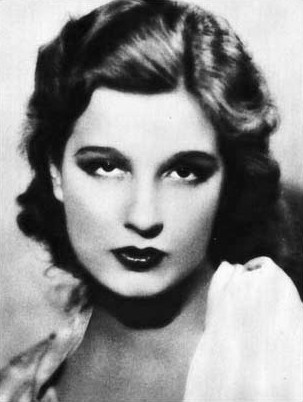
Lili Damita was a French-American actress, singer, and dancer who appeared in 33 films between 1922 and 1937.
Fritz Schulz was a German and Austrian movie and stage actor, singer and director.

Das Spielzeug von Paris is an Austrian silent film released in 1925, and directed by Michael Curtiz. It was the first film to feature French actress Lili Damita in the leading role.

Young Medardus is a 1923 Austrian silent historical drama film directed by Michael Curtiz and starring Victor Varconi, Egon von Jordan and Agnes Esterhazy. Based on a play with the same name by Arthur Schnitzler, it is set during the 1809 French occupation of Vienna during the Napoleonic Wars.

Cab No. 13 is a 1926 drama film directed by Michael Curtiz and starring Lili Damita, Jack Trevor and Walter Rilla.
The Queen of the Landstrasse is a 1948 Austrian romance film directed by Géza von Cziffra and starring Angelika Hauff, Rudolf Prack and Hermann Erhardt. The film's sets were designed by art director Fritz Jüptner-Jonstorff.

Circus Saran is a 1935 Austrian comedy film directed by E. W. Emo and starring Leo Slezak, Hans Moser, and Ole & Axel.
A Waltz by Strauss is a 1925 Austrian silent film directed by Max Neufeld and starring Eugen Neufeld, Tessy Harrison, and Svet Petrovich.

Knall and Fall as Imposters is a 1952 Austrian-German comedy film directed by Ulrich Bettac and Hubert Marischka and starring Hans Richter, Rudolf Carl and Curd Jürgens. It was followed by a 1953 sequel Knall and Fall as Detectives.
Sievering Studios were film production studios located in Sievering, a suburb of the Austrian capital Vienna.

Her Corporal is a 1956 Austrian historical comedy film directed by E. W. Emo and starring Peter Weck, Traute Wassler, and Paul Hörbiger.

Imperial and Royal Field Marshal is a 1956 Austrian historical comedy film directed by E. W. Emo and starring Rudolf Vogel, Gretl Schörg, and Mady Rahl.

The Cabbie's Song is a 1936 German romantic drama film directed by E. W. Emo and starring Paul Hörbiger, Gusti Huber, and Franz Schafheitlin. The film offers a nostalgic view of Vienna during the old Imperial Era. It takes its name from a popular Viennese song, and is set in the 1880s at the time of the song's composition. It was made at the Bavaria Studios in Munich and partly shot on location in Budapest and Vienna. The film's sets were designed by the art director Emil Hasler.

Our Crazy Nieces is a 1963 Austrian comedy film directed by Rolf Olsen and starring Gunther Philipp, Vivi Bach, and Paul Hörbiger. It was the second part in a trilogy of films which began with Our Crazy Aunts in 1961 and finished with Our Crazy Aunts in the South Seas.

Our Crazy Aunts is a 1961 Austrian comedy film directed by Rolf Olsen and starring Gunther Philipp, Gus Backus, and Vivi Bach. It was followed by two sequels, Our Crazy Nieces and Our Crazy Aunts in the South Seas.

Our Crazy Aunts in the South Seas is a 1964 Austrian comedy film directed by Rolf Olsen and starring Gunther Philipp, Gus Backus, and Udo Jürgens. It was the final part in a trilogy of films that also included Our Crazy Aunts and Our Crazy Nieces. Barbara Frey was cast in the role that had been played by Vivi Bach in the two previous films.

Friedrich Schiller is a 1923 German silent historical film directed by Curt Goetz and starring Theodor Loos, Hermann Vallentin, and Ilka Grüning. It is a biopic of the life of the eighteenth century writer Friedrich Schiller. In 2005 the film was restored with a slightly shorter running length.

Ball at the Savoy is a 1935 Austrian-Hungarian musical film directed by Steve Sekely and starring Gitta Alpar, Hans Jaray and Rosy Barsony. Part of the tradition of operetta films, it is based on the 1932 work of the same title by Paul Abraham. It was remade the following year in Britain.

My Father, the Ape and I is a 1971 Austrian-West German comedy film directed by Franz Antel and starring Gerhart Lippert, Mascha Gonska, Paul Löwinger.















